Today I will talk about my passion and profession-about mechanical engineering.
In the past few days, I've been working on a big project that required hard work. I have designed a catching device of a mini excavator which is one of the most widespread excavators, because it is small in size, with relatively large carrying capacity and can do a great work in construction. Mini excavators can vary in size, starting with very small ones that are used in households for garden works, to those who can make big excavations on building land. Designing this device I worked in a program called CATIA, which is a well-known program for all mechanical engineers, and is used for 3D design of all elements and circuits in mechanical engineering. CATIA is one of the best 3D modeling programs, in which the review of the construction is very real, and that's why I decided to finish this engineering part of the job in it. Below I will show you the drawings, parts and finally the assembly of the entire catching device. This is how the working area of the program looks.
At the beginning I would like to mention that the geometry of the model is very complex, determined by empirical formulas. If you want to model by yourself, take arbitrary dimensions, the most important thing is to respect the shape of the structure due to the loads occurring in it. I'll first show you an arrow drawing.
This is a sketch.
An extruded 3D model would look like this.
The next part of this assembly is called a bucket holder, and it looks like this.
The arrow and the bucket holder have added devices for hanging hydraulic cylinders, and they are modeled absolutely arbitrarily, so there's no need to show their sketch.
The hydro-cylinder looks like this.
These are models of lugs that connect devices.
And finally we came to the most important device that executes the excavation, which is modeled according to the required volume that we need, and this device is the most complexed for modeling. This looks like a 3D model.
When we connect all these parts to the assembly, we get the catching device of our mini excavator.
Of course, at the end of modeling, you must calculate all the loads that occur on this construction, and if the load is greater than the permissible, you must make changes on your model.
I hope that you will like this text, and I also hope that it will be useful for engineering world.
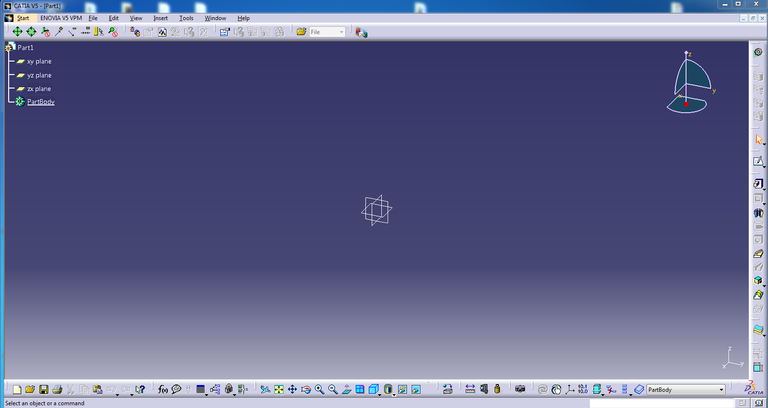
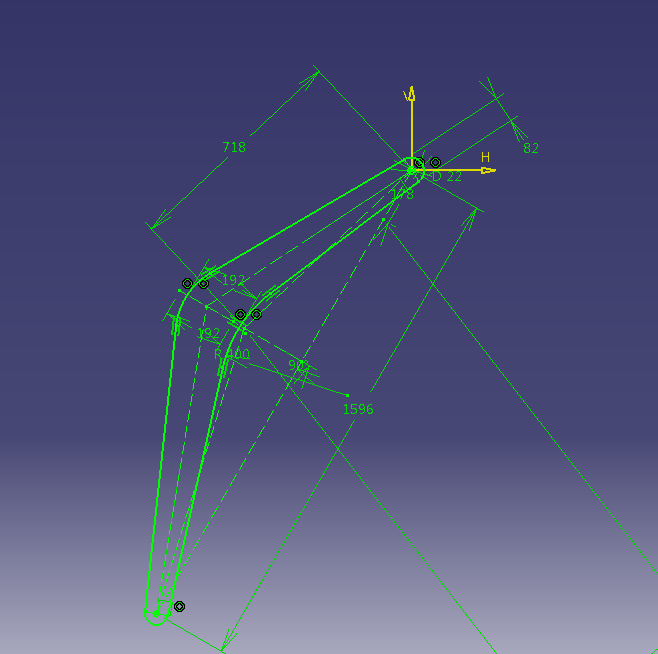
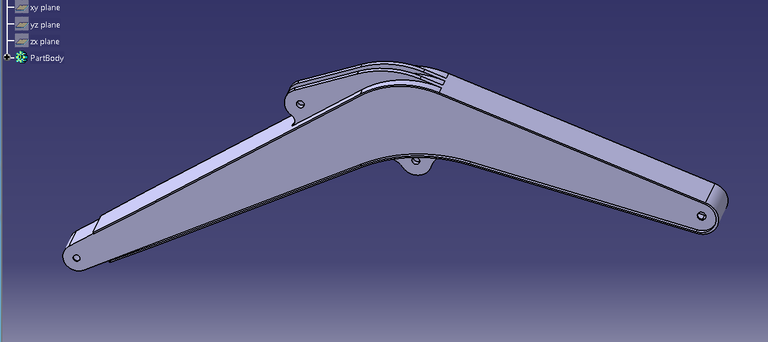

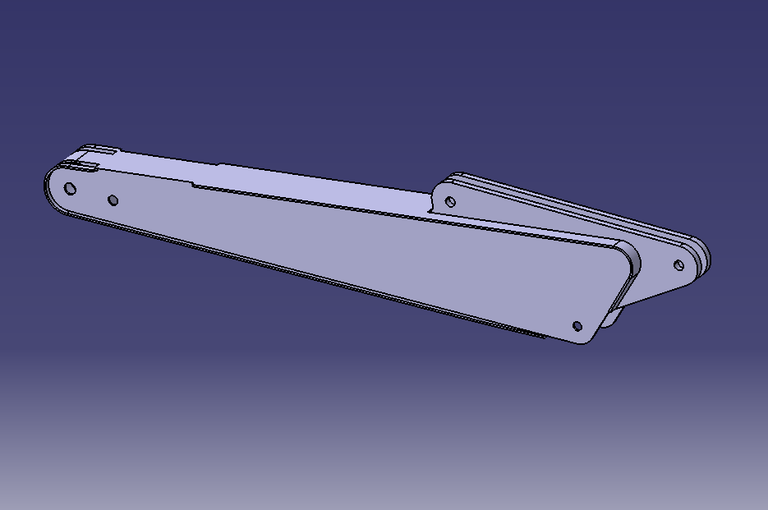
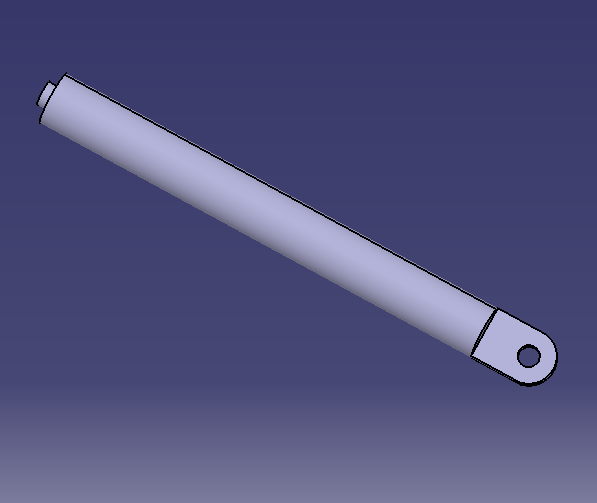
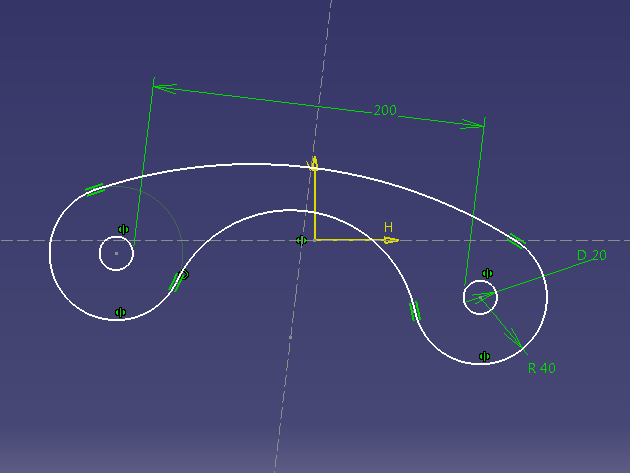
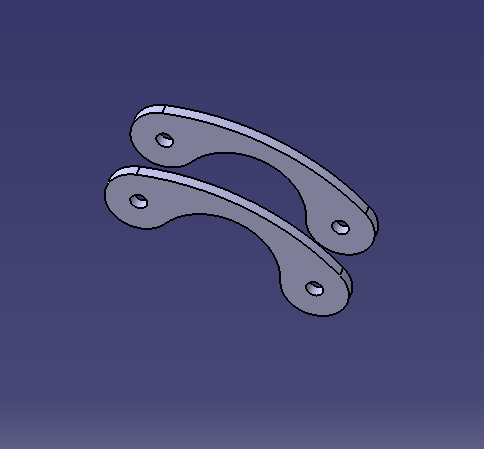

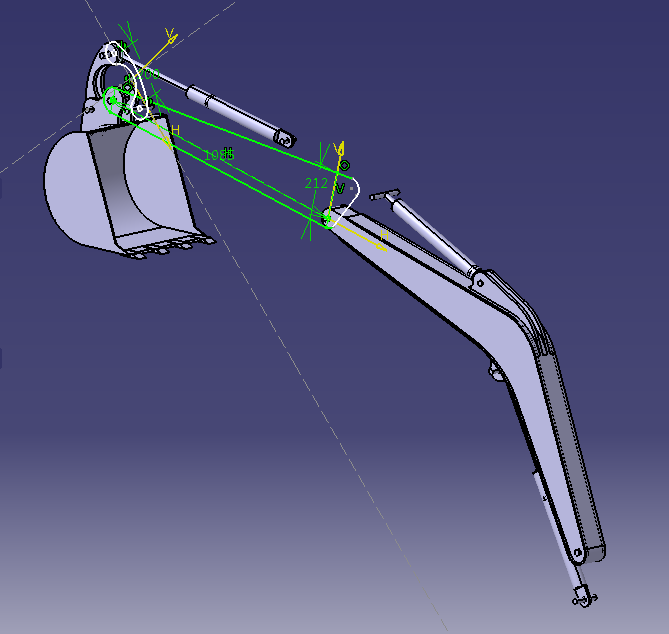
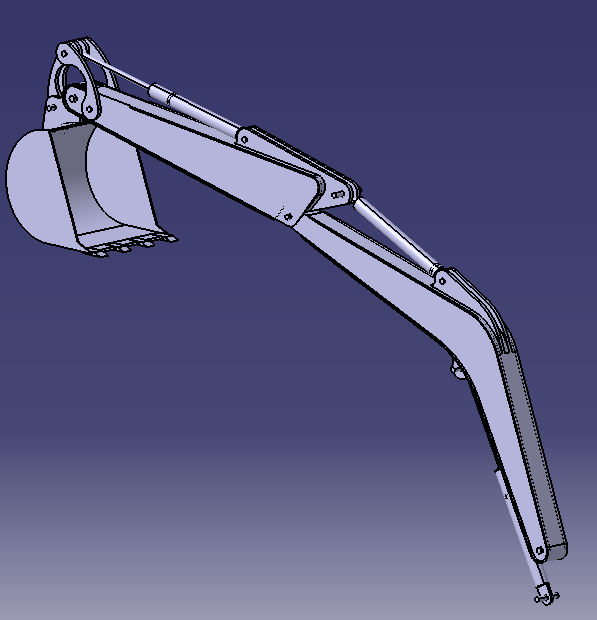
This case could be a really good tutorial for beginners in part design in Catia. Unfortunately in current state somebody new in Catia can't use it because he/she won't know tool which you used in your project. In other hand for somebady with some experience in Catia this case won't give any new information. Neverless it a nice project for some hobbyist. GJ :)